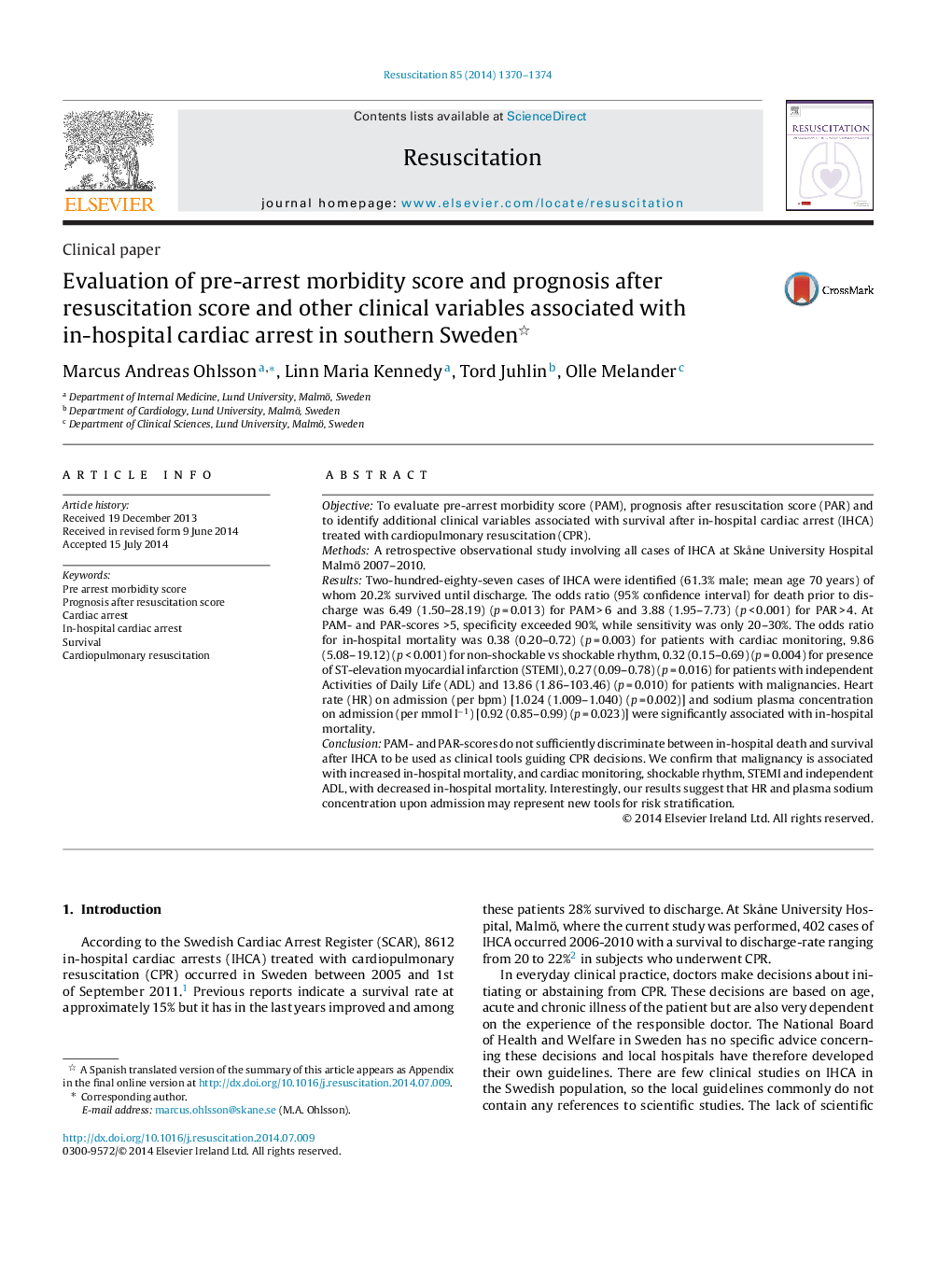| Article ID | Journal | Published Year | Pages | File Type |
|---|---|---|---|---|
| 5998352 | Resuscitation | 2014 | 5 Pages |
ObjectiveTo evaluate pre-arrest morbidity score (PAM), prognosis after resuscitation score (PAR) and to identify additional clinical variables associated with survival after in-hospital cardiac arrest (IHCA) treated with cardiopulmonary resuscitation (CPR).MethodsA retrospective observational study involving all cases of IHCA at SkÃ¥ne University Hospital Malmö 2007-2010.ResultsTwo-hundred-eighty-seven cases of IHCA were identified (61.3% male; mean age 70 years) of whom 20.2% survived until discharge. The odds ratio (95% confidence interval) for death prior to discharge was 6.49 (1.50-28.19) (p = 0.013) for PAM > 6 and 3.88 (1.95-7.73) (p < 0.001) for PAR > 4. At PAM- and PAR-scores >5, specificity exceeded 90%, while sensitivity was only 20-30%. The odds ratio for in-hospital mortality was 0.38 (0.20-0.72) (p = 0.003) for patients with cardiac monitoring, 9.86 (5.08-19.12) (p < 0.001) for non-shockable vs shockable rhythm, 0.32 (0.15-0.69) (p = 0.004) for presence of ST-elevation myocardial infarction (STEMI), 0.27 (0.09-0.78) (p = 0.016) for patients with independent Activities of Daily Life (ADL) and 13.86 (1.86-103.46) (p = 0.010) for patients with malignancies. Heart rate (HR) on admission (per bpm) [1.024 (1.009-1.040) (p = 0.002)] and sodium plasma concentration on admission (per mmol lâ1) [0.92 (0.85-0.99) (p = 0.023)] were significantly associated with in-hospital mortality.ConclusionPAM- and PAR-scores do not sufficiently discriminate between in-hospital death and survival after IHCA to be used as clinical tools guiding CPR decisions. We confirm that malignancy is associated with increased in-hospital mortality, and cardiac monitoring, shockable rhythm, STEMI and independent ADL, with decreased in-hospital mortality. Interestingly, our results suggest that HR and plasma sodium concentration upon admission may represent new tools for risk stratification.
